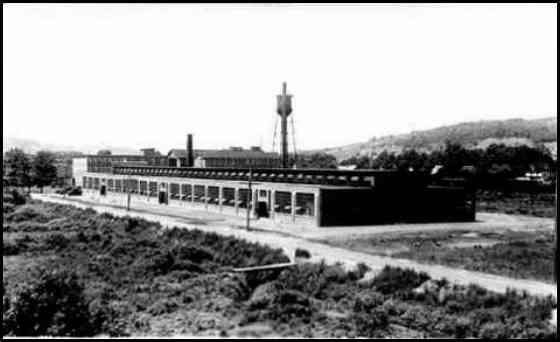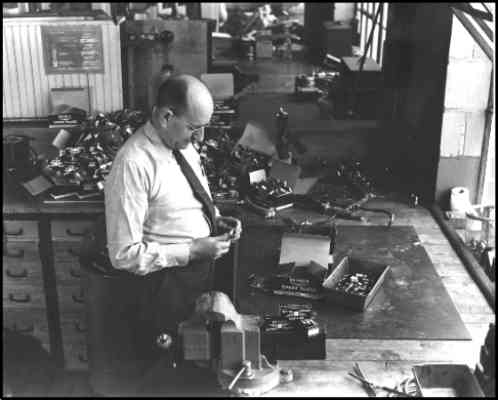BENDIX AVIATION CORPORATION
1935

Courtesy Sidney Historical Association
| SCINTILLA MAGNETO DIVISION BENDIX AVIATION CORPORATION 1935 |
||

|
||
| Scintilla Magneto (now Amphenol-Aerospace), Sidney, N.Y., circa 1935 Courtesy Sidney Historical Association |
|
On my return from Europe, I found that Packard had abandoned all aircraft work. They said I could stay on at a reduced salary in the car experimental department. The work was uninteresting and did not pay very good. I took a position with the Scintilla Magneto Division of the Bendix Aviation Corp. with headquarters at N.Y. They had bought out the Hurley Townsend spark plug company in New York City and was moving operations to Sidney. This was an aviation spark plug company and I was hired to introduce it to the airlines, Navy and Air Force. My title was Sales Engineer. The personnel at Scintilla were; H. Harrin, General Manager; George Steiner, Assistant Manager; Walter Spengler, Engineer; Tom Fagen, Sales Manager; Les Trees, Service Manager; ... Togulo, Engineer. We went first to New York City to the Hurley Townsend plant, then to Sidney. My family stayed in Royal Oak, Michigan. The plugs were first tested at the Wright Aero Company and then at Pratt Whitney. After they had OK'd them, I took samples to all the airlines, the Air Force and the Navy. I arranged to try the plugs first in a test stand engine. If that was OK, half a set was put in one engine of a two-engined plane on a test flight. If that was OK, a full set was put in one engine. When that was OK, both engines were equipped with the new Scintilla Plugs Next a half set was put in one engine of a two-engined plane on a regular airline flight. As the plugs proved to be OK, they were installed in both engines. I contacted American, Continental, TWA, Eastern, United, Southern and Northwest airlines. I finally had both United and Northwest using the plugs. Shortly thereafter, TWA was using the plugs. My traveling routine was to keep moving from one airline base to another watching all plugs on test and helping to set up plug maintenance equipment. I designed a spark plug fixture for Scintilla that would disasemble and assemble the plugs and also would set the gaps. |

|
|
I managed to get home for weekends about every two weeks. I traveled all over the US, mostly by
flying on airlines, once in a while by train and also by car for short trips. In the all flying trips on airlines during five years, I never was in an accident, although there had been few tense moments several times. One time, flying from Chicago to Dallas at night in a Lockheed 10, we came down through a solid overcast at Fort Worth. I was watching out of the window when a bright glow showed up under the wing and the pilot pulled up sharply and climbed above the overcast. We flew on to Waco and landed. I heard the pilot remark to another pilot that he had thought he could land at Fort Worth, but the clouds were right on the ground. Another time, going into the airport at Kansas City, the pilot glided into the field from the south, touched the runway with his wheels, found that the runway was covered with ice, so gave it the gun and took off again. The plane was loaded with aeronautical men going to an airlines maintenance meeting in Kansas City. About December 1, 1940, I received orders from the Navy to report to Pensacola, Florida for active duty. I was home at the time, so I wrote to Scintilla telling them of my orders from the Navy and tendering my resignation. 

|